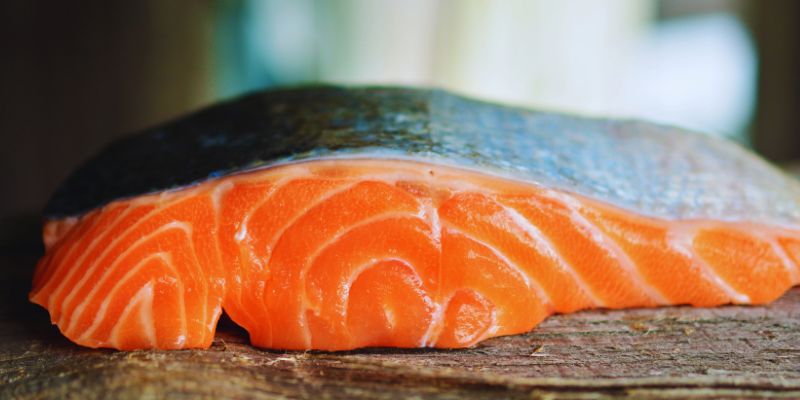Farmed vs. Wild Fish: The Ultimate Guide to Finding Omega-3 Fats
Omega-3 fats are essential for heart, brain, and overall health. They boost brain operation, aid in lowering inflammation, and strengthen heart health. Among the better sources of these good fats are fish. However, not every fish has the same concentration of omega-3s. The variations between farmed and wild fish much influence their nutritional worth. Farmed fish depend on processed food, while wild fish eat naturally.
Their omega-3 levels and general health advantages are therefore influenced. Many individuals ask which kind is superior. Is it always the healthier option for wild fish? Enough omega-3s can come from farmed fish? Knowing these variances will help you pick the best fit for your diet. This article will contrast wild and farmed fish to assist you in selecting the optimum source of omega-3 fats for your needs.

Omega-3 Fats: Why They Matter
For general health, omega-3 fatty acids are vital. They lower inflammation, enhance brain health, and assist with heart function. Reduced risk of heart disease, greater cognitive performance, and better joint health are just a few benefits of these good fats. Alpha-linolenic acid, EPA (eicosapentaenoic acid), and DHA (docosahexaenoic acid) are the three primary forms of omega-3s. Plants provide ALA; these examples are walnuts, chia seeds, and flaxseeds. However, the body only converts a tiny fraction of ALA into EPA and DHA.
EPA and DHA are the most effective forms of omega-3s, coming mostly from fatty fish. The body needs these fats since it does not synthesize them independently; they come from meals. Getting adequate EPA and DHA is best accomplished by eating fatty fish, including salmon, mackerel, sardines, and herring. To satisfy daily omega-3 needs, doctors advise at least thrice weekly fish consumption. Choosing the correct fish guarantees the maximum health advantages.
Omega-3 Levels in Wild Fish
Naturally, from their nutrition, wild fish acquire omega-3s. Small fish, plankton, and algae—which offer EPA (eicosapentaenoic acid) and DHA (docosahexaenoic acid)—are among their foods. These good fats boost brain and heart function. Among the finest sources of omega-3s are fatty fish, including salmon, mackerel, sardines, and herring. Wild fish grow powerful muscles since they reside in open waters, which causes them to be leaner than farmed fish. Their fat level and general nutritional profile have changed.
Furthermore, wild fish are naturally balanced in healthy fats, proteins, and vital nutrients. However, their availability relies on the season and the fishing spot. Their omega-3 elements might also affect their environmental levels, including pollution and water temperature. Wild fish remain a first choice for omega-3 intake despite these variances. They offer premium nutrition devoid of synthetic feeding. Selecting wild fish that are fresh and responsibly sourced guarantees a decent balance of omega-3s for a sensible diet.
Omega-3 Levels in Farmed Fish
Farmed fish live in regulated conditions under well-controlled diets. They consume fish meal, grain-based processed feed, including fish oil. This diet impacts their omega-3 content; it may be higher or lower than wild fish. Omega-3-enriched diets for some farmed fish help to raise their EPA and DHA levels. Farmed fish occasionally have even higher omega-3s than wild fish. However, the nutrition of farmed fish varies. Some farms cut omega-3 levels by using inferior feed.
Furthermore, affecting nutrition is the kind of fish and farming technique. For instance, farmed salmon boasts more fat than wild salmon. It enhances the harmful fat levels even while it increases omega-3 content. The optimum nutrition requires selecting premium farmed fish. Better health advantages come from fish grown on sustainable farms on feed high in omega-3s. Ensuring a good choice depends on farming methods and source checking.

Farmed vs. Wild: Which Has More Omega-3s?
Though their levels vary, wild and farmed fish have omega-3 fatty acids. From their natural food of algae, plankton, and smaller fish, wild fish obtain omega-3s. This diet lets them create a balanced fat profile with high DHA and EPA levels. Their omega-3 level, however, can change according to season, location, and surroundings. Contrarily, farmed fish depend on manufactured food. Farmed fish could have higher amounts than wild fish if the feed is heavy in omega-3s.
Research shows that farmed fish can have more omega-3s than wild salmon. Farmed fish do, however, also often have greater total fat, especially saturated fats, which would lessen their general health advantages. The farming techniques and feed components used in farmed fish affect their omega-3 content. One should pick farmed fish from trustworthy suppliers. Although wild fish often provide a more natural balance of nutrients, their omega-3 levels can occasionally be lower.
Other Nutrients in Farmed and Wild Fish
While omega-3s are vital, other minerals contribute to fish nutrition in farmed and wild forms. Usually leaner with less overall fat and more protein content, wild fish's Natural minerals such iodine, selenium, and iron—which boost general health—also abound in them. Wild fish grow naturally, acquiring a balanced nutrient profile free of synthetic additions. Higher fat levels abound in farmed fish, including more omega-3s and vitamin D. This can help, but it also relies on the caliber of their food.
Some farmed fish are kept under inadequate circumstances, which results in chemicals and antibiotics in their meat. Conversely, especially larger species, wild fish could include toxins like mercury. The sort of fish and their source will determine the best option. Selecting premium, ethically obtained fish reduces exposure to dangerous compounds and guarantees a proper balance of nutrients. Making a good decision requires knowing labels and sources of information.
Conclusion:
Though their amounts and nutritional advantages vary, wild and farmed fish have omega-3 fatty acids. While farmed fish can have more omega-3s but could include more harmful fats, wild fish offer a natural balance of nutrients with leaner protein. Food, farming techniques, and environmental factors shape their nutritional worth. Selecting premium, ethically produced fish guarantees the best health benefits and reduces pollution exposure. Whether choosing wild or farmed fish, verifying labels and origins is important. Knowing these variations lets you choose the best course for your general health and nutrition.











